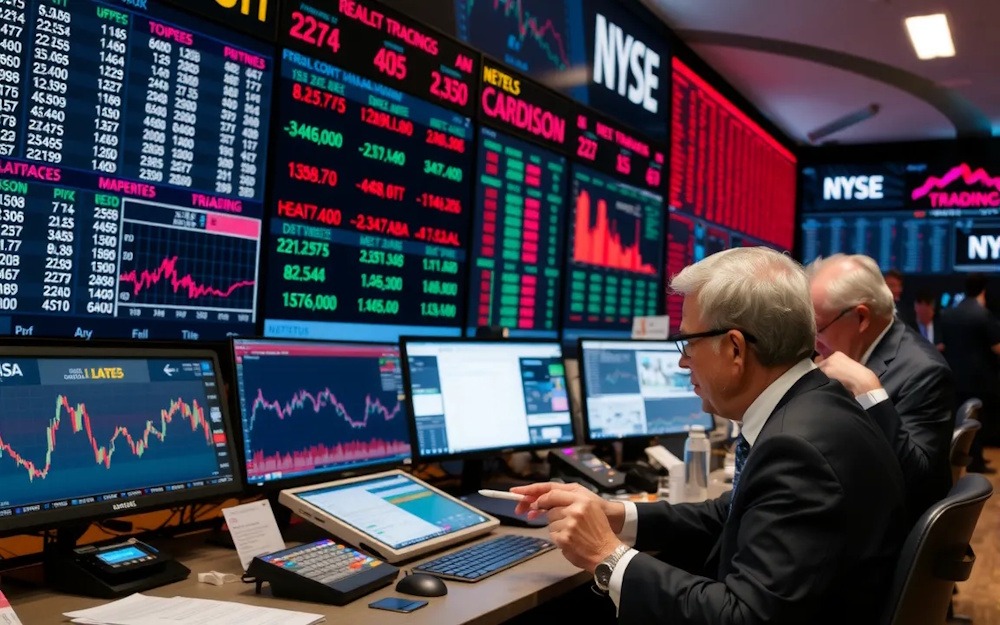
The tech-heavy Nasdaq experienced a decline of 0.1%, translating to a loss of 18.75 points, ultimately closing at 23,024.63 points. The S&P 500 experienced a decline of 0.3%, translating to a decrease of 18.61 points, concluding the day at 6,735.11 points. Industrials, materials, and consumer discretionary stocks were the least successful performers. The Materials Select Sector SPDR experienced a decline of 1.4%, whereas the Industrials Select Sector SPDR saw a loss of 1.5%. The Consumer Discretionary Select Sector SPDR experienced a decline of 0.5%. Ten of the 11 sectors of the benchmark index concluded the day in negative territory.
The CBOE Volatility Index, often referred to as the fear gauge, increased by 0.80% to reach 16.43. On the NYSE, decliners outnumbered advancers with a ratio of 2.91 to 1. On the Nasdaq, a ratio of 1.75-to-1 indicated a preference for declining issues. On Thursday, a total of 20.44 billion shares were traded, surpassing the last 20-session average of 19.75 billion. On the Nasdaq, there were 1,694 new highs and 2,966 new lows. On the NYSE, there were 354 new highs and 91 new lows. On Thursday, stocks experienced a pullback, halting the ongoing rally, as both the S&P 500 and Nasdaq retreated from the all-time closing highs reached in the prior session.
The Dow closed slightly down, with NVIDIA Corporation playing a crucial role in mitigating the losses of the blue-chip index, despite pressure from several industry leaders on the index. On Thursday, NVIDIA’s shares rose by 1.8%, following remarks from Jensen Huang in an interview, where he noted that the semiconductor giant has experienced a significant increase in demand in recent months. Additionally, Oracle Corporation’s ORCL shares experienced a 3.1% increase on Thursday, following a decline the previous day after a report indicated that the company is producing significantly lower margins on its cloud business compared to analysts’ current forecasts. Tech stocks, particularly those in the AI sector, have been driving the current rally, and on Thursday, the losses experienced by blue-chip companies were largely mitigated once more by the performance of tech stocks.
The abrupt halt in Thursday’s rally can be attributed to a drop in consumer sentiment, a consequence of the ongoing government shutdown. Investors, lacking any economic data in recent days, are finding it challenging to assess the future health of the economy and the Federal Reserve’s intentions regarding the next interest rate cut. The Senate’s inability to pass a funding proposal for the seventh time on Thursday has resulted in the government shutdown entering its ninth day. Historically, government shutdowns have not significantly affected markets; however, if such a shutdown persists, concerns regarding the economy’s health may emerge. Investors are shifting their attention to the upcoming third-quarter earnings season, which commences this week and is expected to accelerate in the following week.
